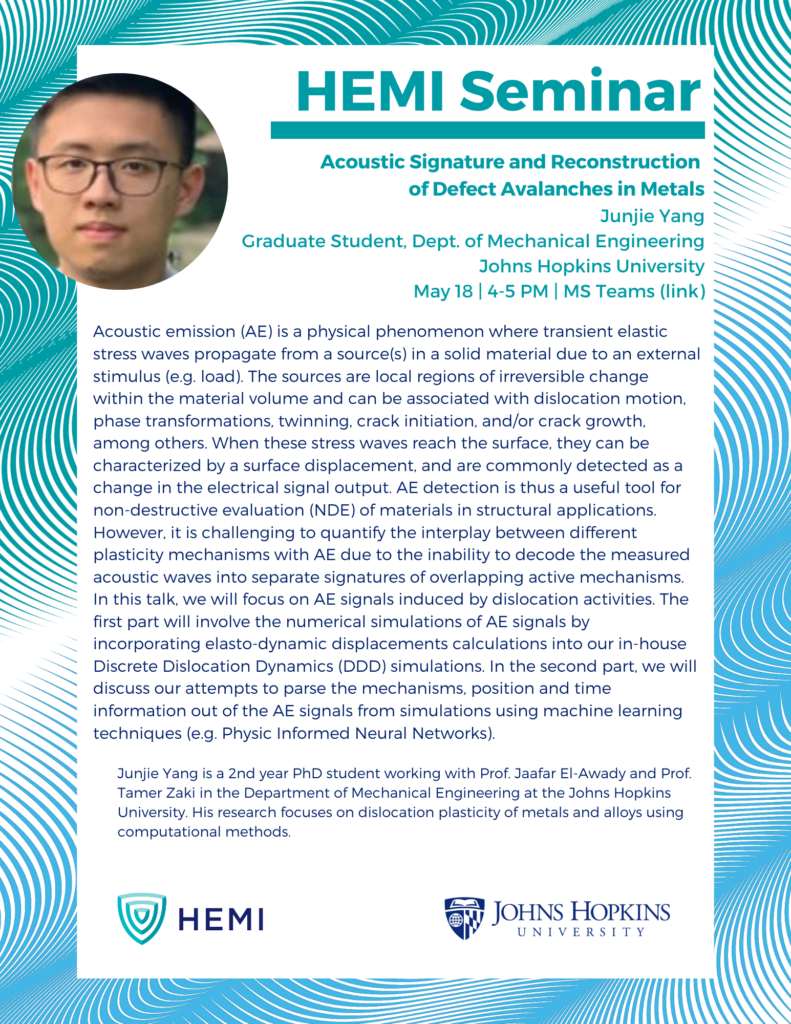May 18, 2021 @ 4:00 pm - 5:00 pm
Event Navigation
Acoustic signature and reconstruction of defect avalanches in metals
Acoustic emission (AE) is a physical phenomenon where transient elastic stress waves propagate from a source(s) in a solid material due to an external stimulus (e.g. load). The sources are local regions of irreversible change within the material volume and can be associated with dislocation motion, phase transformations, twinning, crack initiation, and/or crack growth, among others. When these stress waves reach the surface, they can be characterized by a surface displacement, and are commonly detected as a change in the electrical signal output. AE detection is thus a useful tool for non-destructive evaluation (NDE) of materials in structural applications. However, it is challenging to quantify the interplay between different plasticity mechanisms with AE due to the inability to decode the measured acoustic waves into separate signatures of overlapping active mechanisms. In this talk, we will focus on AE signals induced by dislocation activities. The first part will involve the numerical simulations of AE signals by incorporating elasto-dynamic displacements calculations into our in-house Discrete Dislocation Dynamics (DDD) simulations. In the second part, we will discuss our attempts to parse the mechanisms, position and time information out of the AE signals from simulations using machine learning techniques (e.g. Physic Informed Neural Networks).
Junjie Yang is a 2nd year PhD student working with Prof. Jaafar El-Awady and Prof. Tamer Zaki in the Department of Mechanical Engineering at the Johns Hopkins University. His research focuses on dislocation plasticity of metals and alloys using computational methods.





